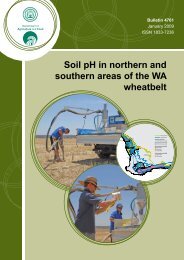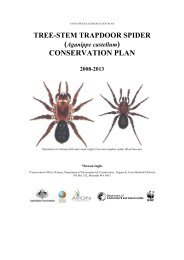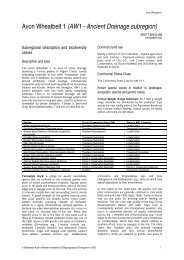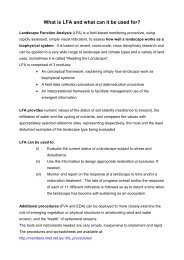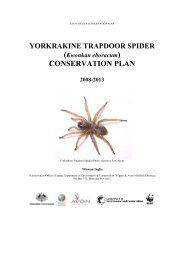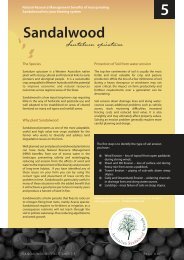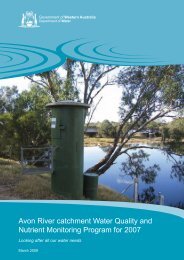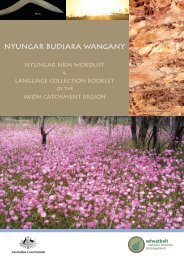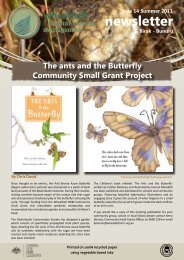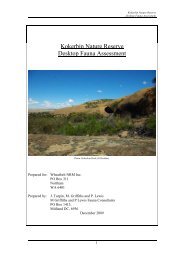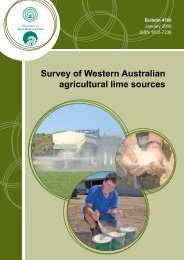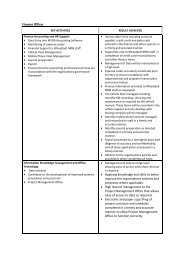RECORDING TRADITIONAL KNOWLEDGE O r ... - Wheatbelt NRM
RECORDING TRADITIONAL KNOWLEDGE O r ... - Wheatbelt NRM
RECORDING TRADITIONAL KNOWLEDGE O r ... - Wheatbelt NRM
Create successful ePaper yourself
Turn your PDF publications into a flip-book with our unique Google optimized e-Paper software.
Gubbrun (Refer to Map on page 19).<br />
Aboriginal Tribes of Australia, 1974)<br />
(This information is reproduced from N.B Tindale's<br />
The focus for the Avon Catchment Council relates to Indigenous knowledge for the themes of<br />
Water, Fire, Biodiversity and Land.<br />
‘will you walk with us, respect us, and listen to us”? If you will,<br />
together we may make the progress so many people have been<br />
seeking for so long’. (Ballardong Natural Resource Management<br />
Working Group)<br />
(*Note: there are several ways of spelling the word Noongar. This version has been adopted<br />
by the Ballardong Natural Resource Management Working Group.)<br />
A number of different language variations occur amongst the Balardong, Juat, Kaneang,<br />
Koreng, Minang, Njakinjaki, Pibelmen, Pindjarup, Wardandi, Whadjuck, Wiilman and<br />
Wudjari in the southwest of Western Australia (Tindale 1974; Douglas 1976). There are even<br />
variations in the spelling of the word which include Nyungar, Noongar, Nyoongar,<br />
Nyoongah, Wargle, Waakle, Warrgul or Woggal (the Noongar Rainbow Snake).<br />
This variation reflects both regional dialect differences as well as an attempt by groups in<br />
these areas to retain, in a modern Australian society, a sense of independence and<br />
difference within. Therefore, the authors acknowledge that writing Nyungar language has<br />
been somewhat difficult because of the different ways the words have been spelt over the<br />
course of time.<br />
Page 7



